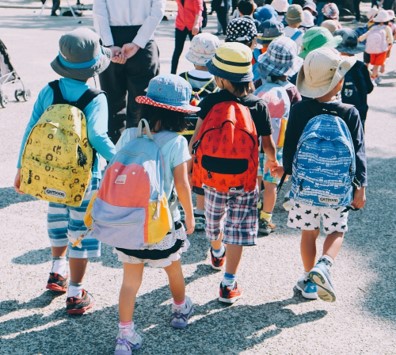The California School Facilities Research Institute (CSFRI) was established for purposes of seeking empirical data that focused upon the impact of the built K-12 school environment on student engagement and learning. It was the intent of CSFRI to gather such information to offer educators and school architects a base of knowledge of what works best to support student learning upon which they could rely in the planning of building, rebuilding and the modernization of schools. CSFRI was formed to serve as a resource to offer independent and dispassionate research information focused solely on the matter of the impact of school facilities on the success of students. It is the intent of CSFRI to also summarize and share this information for the legislature, policy developers and constituents as they consider prioritizing capital funding to meet their constituents needs within the financial resources available.

CSFRI is composed of school practitioners, architects, bond underwriters and others involved in the unique world of school infrastructure. The CSFRI Board established goals and activities that it believed would offer opportunities to meet the challenges of designing and furnishing schools. At its core, CSFRI is seeking to fund and engage research that would provide empirical data to support what educators know: the built school environment makes a difference in the engagement and learning of students at the K-12 level.
There are numerous stories told by practitioners about what works best in the physical place we call school that impacts learning. Communicating anecdotal experiences has value yet it is not sufficient for the purposes of planning and building schools in this century. There are 977 school districts in California that operate over 10,000 school campuses. In some school districts the support for excellent school facilities is evident while in others a lacking may be seen. CSFRI is intent on the purpose providing research-based information to school leaders and architects and the communities which they serve to offer guidance in serving students in the physical environments we call schools.
CSFRI has sought to find and publish unbiased, professionally researched-based, detailed information that to guide us from work found in California, in other states and internationally. The mission of CSFRI is understanding what is significant in the built school environment and to offer that information to leaders in schools and education policy makers.

In 2016 CSFRI was conceived and its leaders sought donations from private sector members interested in pursuing the research goals identified. Thereafter, the fledgling CSFRI commenced to seek a research entity at a college or university that would be interested in conducting the studies envisioned. Through a competitive RFQ process, the University of Oregon was selected in February of 2021 to conduct the first project.
This initial project commenced in March 2021 and was completed by November 2021. Outcomes and deliverables include a white paper detailing the process, well documented research findings, and next steps recommended to fill gaps identified in the initial research. Here is a summary of the findings:

Indoor Environmental Quality (IEQ)
- Thermal comfort: Children prefer cooler temperatures than adults.
- Indoor air quality: Increased ventilation rates increase student performance.Conversely, low ventilation rates hinder concentration and test performance.
- Lighting: Access to daylight and windows positively impacts student performance.
- Views: Views of nature decrease stress and increase student performance.
- Acoustics: Children are a high-risk group for chronic noise exposure. Poor acoustics affect student’s learning and communication.
Spatial Environment
- School Maintenance & Operations: Ventilation investments are a cost-effective and long-lasting measure to prevent COVID-19 and can increase student performance.
- School Design: Schools’ outdoor green space has a significant positive impact on health, learning and academic achievement.
- Classroom Organization: Students tend to be less sedentary and prefer active and flexible learning spaces.

People/Community
- Social interactions: Neighborhoods and built environment surrounding the school can create spaces for youth to participate in activities which have been shown to help develop social emotional health and encourage prosocial behavior.
- Relationships: When students feel supported, a sense of belonging, and have opportunities to engage in activities, they can have increased well-being as well as better completion and academic outcomes.
- Teaching & Learning: Teachers need flexible and adaptable teaching spaces to accommodate changing pedagogy as well as enhancing innovation and creativity in learning experiences.
- Belonging, Safety, and Security: Students who feel a sense of ownership and belonging to the school and community have social and academic success as well as long term trajectories of individual well-being and contributions to society.
- Health and well-being (including COVID-19): Buildings and grounds used within and outside of school hours contribute to student well-being, increased physical and mental health, positive relationships, and increased access to student services.
This information has been presented at several venues including and EDspaces in Pittsburgh, Pennsylvania on November 3, 2021 and at the Annual Conference of the Coalition for Adequate School Housing (CASH) in Sacramento, California on February 24, 2022. The research is available at the link below.

